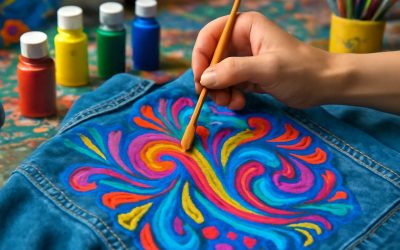
Fabric paint is a special type of paint that can be used to create designs and patterns on clothing, shoes, tote bags, throw pillows, and other accessories. It is typically much thicker than traditional acrylic or craft paint, and it requires different preparation techniques in order to work properly. This article will provide tips and advice on using this paint effectively, from selecting the right type of paint for your project to properly setting it with heat after completion.
The best way to learn how to use fabric paint is by practice on scraps of fabric before diving into a bigger project. This will allow you to get a feel for how much control you can have over the paint, and it will also help you understand the kind of shading and layering that is possible with this type of painting. It is also important to protect any parts of furniture or other materials that you do not want to get paint on, especially if it will be difficult to clean once dry.
There are several types of fabric paint available, and each is designed to adhere to specific surfaces. This can make it challenging to choose the right one for your project, but the most important factor is the type of surface that you are planning to paint. Some are formulated to be thick and durable, while others are more similar to ink and will fade with repeated washings.
Once you have chosen a fabric paint, it is important to read the instructions on the bottle carefully. You will likely need to pre-wash the fabric before you can begin working on it to eliminate any chemicals or starches that might prevent the paint from adhering properly. In addition, most fabric paints will require that you heat set the finished product afterward in order to ensure that it will not wash off or fade with time.
In order to properly set the fabric paint, you will need to iron it on a low heat setting while using a pressing cloth. This will ensure that the paint is sealed and bonded to the fabric, and it will also help to minimize any wrinkles in the fabric once it has cooled. This process will take between two and five minutes, depending on the fabric and the type of paint that you are using.
Once you have completed the heating and setting process, you can begin to enjoy your new creation! Be sure to place the item somewhere that it will not be disturbed, and let it dry completely before handling it. It is also a good idea to keep the item away from any sunlight, as this can cause it to bleach and fade over time. While this is not a big problem for most items, it may be a concern for delicate fabrics that you do not want to damage. As long as you follow the best practices for using and setting fabric paint, it can be a wonderful medium for creating unique, handmade accessories and clothing that will stand out from the crowd.



0 Comments